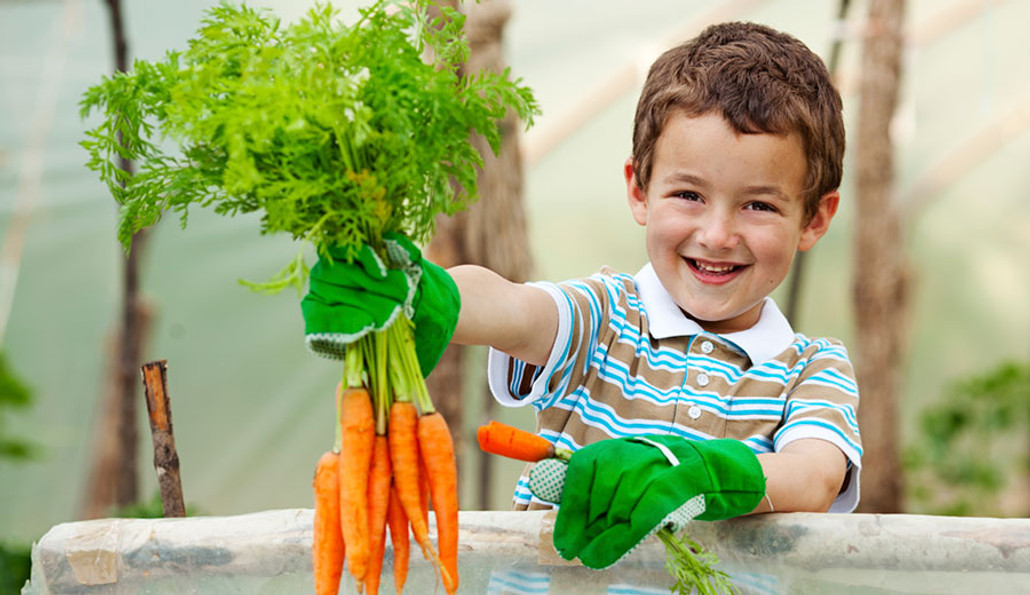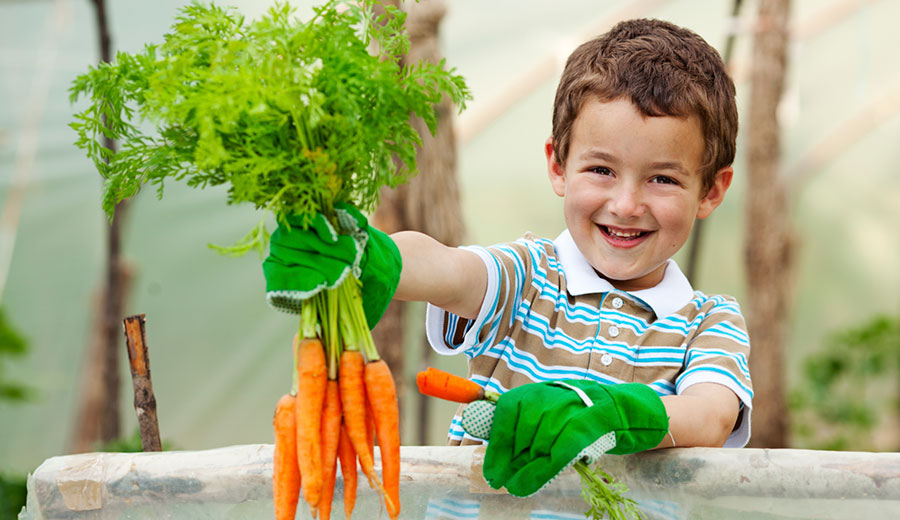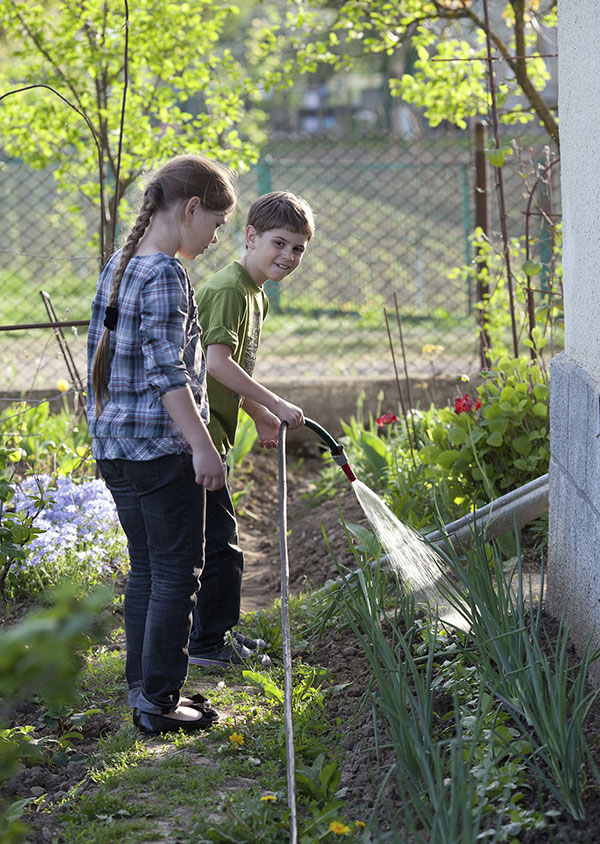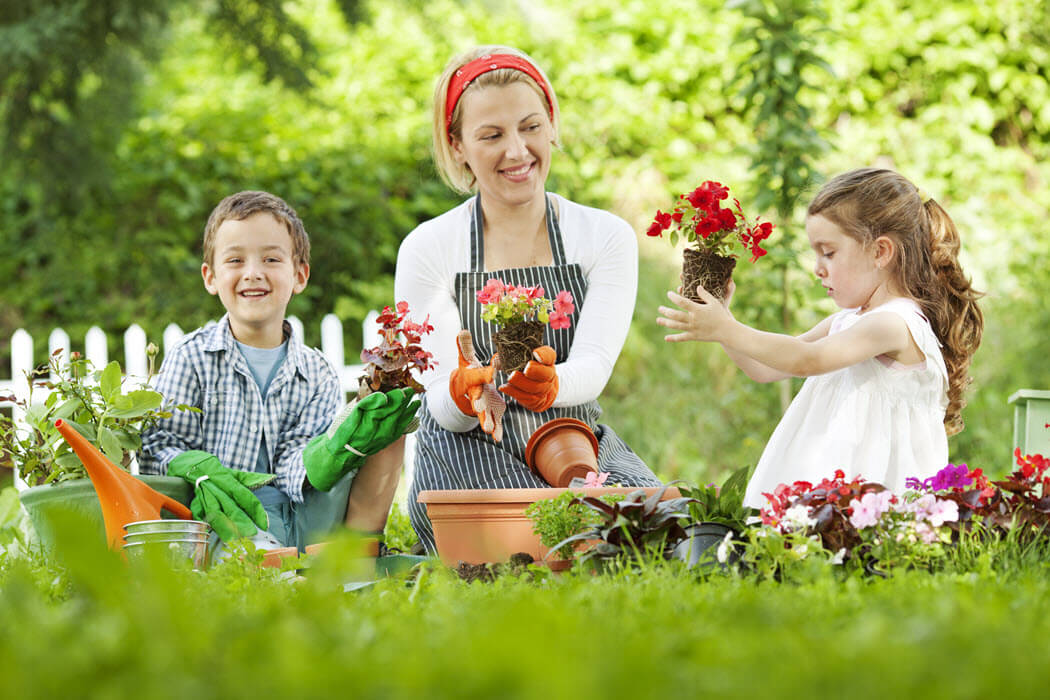
Family Gardening
Posted by Grange Co-op on 1st Mar 2016
Family gardening reaps a host of benefits, but the bottom line is that it’s a lot of fun. You’re getting outside, spending family time together and creating memories, working towards common goals, and learning communication, responsibility, patience, and the cycle of life firsthand. Family gardening not only teaches your kids, but it also teaches you how to effectively work together with your kids. Sound like experiences you want to enjoy as a family?

And oh yeah: you get a lot of fresh, healthy produce that your kids are more likely to eat. When your family works together to make a garden, you are enjoying your own clean fruits, vegetables, and herbs that taste better than what you’d find at the market.
Let’s start by thinking about the phrase “garden work,” which is why a lot of children shy away from helping mom and dad plant, pull weeds, water, and care for the garden. Yes, gardening requires work and dedication, but once you are actively involved, that work feels more like satisfaction, accomplishment, and success. To instill those feelings in your children is priceless. So how about calling it “garden fun” or “garden time” or something more enjoyable than “work”?
Play in the dirt as a family!
Another way to think of family gardening is that it’s more than just a garden you are creating. You are also making a pleasant environment for grandma to sit and enjoy the outdoors. You are beautifying an area that was once just a dog run or sandbox. You are creating a living, breathing, producing organism in your own yard. You are facilitating food production at your home.
A family garden can be any size or setup you desire, and here are a few tips to help get you started:
Give kids their own garden beds, rows, or sections to be responsible for. Each person in the family needs their own spot, whether it’s a raised bed, container or ground plot. For younger kids, keep their section small so they don’t become overwhelmed.
Start with seeds.
Planting seeds and watching them grow from small sprouts to food-producing plants in the garden is an awesome experience for kids. They learn step-by-step the growing process from beginning to end, and the experience requires them to give sprouting seeds proper care to ensure a healthy life. Start the seeds indoors in a warm room, then transplant into the final garden space once they’re ready, according to the seed packet’s instructions.

Teach throughout the process.
You likely have a lot of gardening knowledge and tips you can pass onto your kids, and never miss an opportunity to teach and guide them through the process. Children learn quickly when they can experience the topic firsthand through seeing, hearing, and doing, and this is your opportunity to teach away. Make sure they take responsibility with their own garden tasks after you have shown them how. When they do it themselves, they better grasp both how to do it and also the importance of doing it correctly, as their work will have a direct impact on the results.
Have fun decorating the garden.
As discussed, gardening isn't all about “work,” so why not have some fun with decorating your garden? Paint colorful garden stakes or stones to identify plants, add grazing balls or pinwheels, make a fairy house, or anything else to personalize and brighten up your garden. Kids love craft projects, and there are lots of opportunities to spruce up your garden and put your kids’ creative stamp on it.
With your guidance, your kids are capable of growing most any crops in their garden. There are, however, some that are more suitable for children with colors, quick growth, and tastes. Here are some to consider:
- Sunflowers. Bright and colorful, tall and fast growing – everyone loves the signature look of sunflowers, especially children. The sunflower is perfect for your child’s plot of land, and something they’ll also find in many of their books and videos. Sunflowers take a lot of room so plant two at the most. They sprout in a week and become a small seedling in two weeks. At 8 weeks, buds will flower with hundreds of sunflower seed kernels becoming visible. You can roast the seeds for a healthy snack, just be sure to save a few for next year’s planting.
- Lettuce. Does your child resist salads? If they grow their own ingredients, they might just learn to love this healthy green food. Lettuce is a quick crop with lots of visible growth to stimulate their interest. Butter (a soft leaf) lettuce is best for kids, and make sure to plant in part shade and keep the soil moist during the first couple of weeks. Seeds germinate in 7 to 10 days, and they grow for 40 to 50 days.
- Radishes. Choose globe radishes which are sweet and mild, and not as fiery as smaller other radishes. These can easily be grown from seeds and show quick results for kids. Seeds germinate in 3 to 10 days with a short growing season of 20 to 30 days.
- Snow Peas. Kids will love eating these tasty treats right off of the vine, or they are perfect for packing in lunches. Snow peas take around 10 days for germinating and mature in 60 days. Pick a cooler, partially shaded spot in the garden. These are for very early planted gardens.
- Patio Tomatoes. These are a medium-sized tomato with small bushes that are perfect for kids. The plants grow to about 2 feet tall and make flavorful 3 to 4 ounce tomatoes. Plant in full sun; the plants mature in 70 days. Kids also love bite-sized cherry tomatoes!
- Strawberries. Everyone loves strawberries, and your kids will love them even more if they grow them themselves. “Day neutral” varieties are great because they produce over the whole season and don’t take as long to develop fruit. Some good types to consider are Seascape and Tristar strawberries, which pack a lot of great taste. Quinault, which are everbearing strawberries, taste great and produce HUGE berries.
- Nasturtium Flowers. If you want to add colorful flowers to your child’s garden, these are easy to maintain and yield quick results. Plus nasturtiums are edible, so you can add them to salads! They bloom in around 50 days after seeds are planted, and create quite a show with orange, yellow and red flowers. Choose a sunny, dry location.
- Bush Beans. These are fast, easy, and produce a lot. Bush beans germinate in 4 to 8 days and mature in 40 to 65 days. Have your kids plant them in full sun in small patches a few weeks apart to extend the harvest throughout the summer. The low bush varieties are easier for kids to harvest.
- Carrots. Easily recognizable for kids, the only drawback to carrots is that they are slow to germinate. These are a lot of fun for kids to harvest and finally see what’s been growing beneath the soil. Plant seeds directly in the soil and be patient – a great virtue for kids to learn! Pick smaller varieties which are easier to grow and fun to eat. Keep them well watered and they should mature in about 60 days.
- Potatoes. Like carrots, potatoes grow underground so they are fun to dig up and find during harvest like Easter eggs. Red varieties mature faster and the color is fun for kids. To plant, cut up seed potatoes into chunks with least 2 'eyes' per chunk. Plant them in rows about 12 to 15" apart, with eyes pointing up. Mound the soil up around plant as it grows and harvest when the plant collapses.
- Pumpkin. Kids can make their own jack-o-lanterns, from seed! These take a lot of space so make sure you have the room. Seeds will sprout in about a week, and vine leaves will begin to form and creep on the ground after a few days. After 3 pumpkins are on the vine, pick off other new blossoms. Pumpkins take 80 to 120 days to harvest; you’ll know it’s ready when it’s hard on the outside and has a hollow sound when tapped.
In creating and maintaining a family garden, you’ll enjoy a long list of character and family-building benefits along the way. Above all, remember to enjoy yourselves as you garden together as a family!

For more gardening tips, you can also speak with the “Grange Gardeners” at your local Grange Co-op garden center, or visit our Lawn & Garden section. Shop lawn and garden online.
